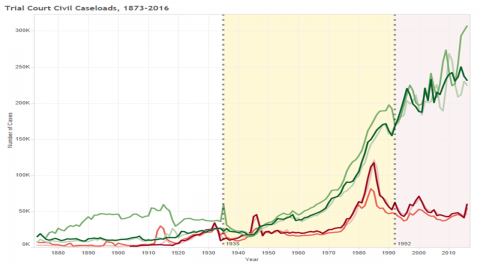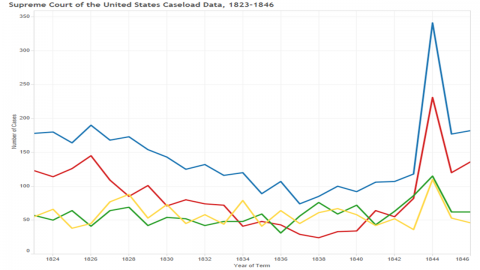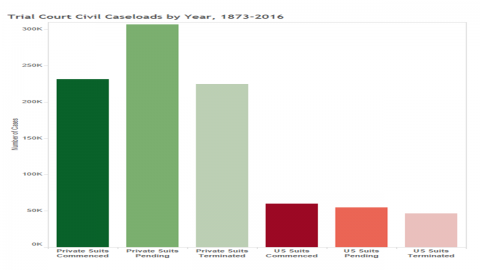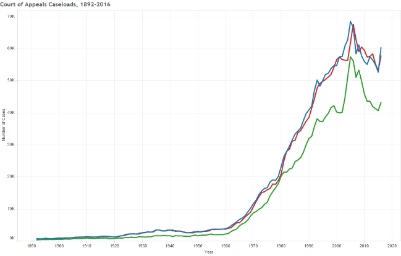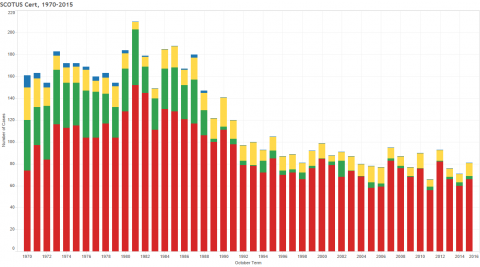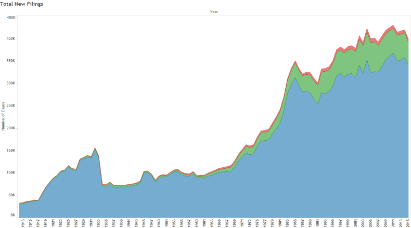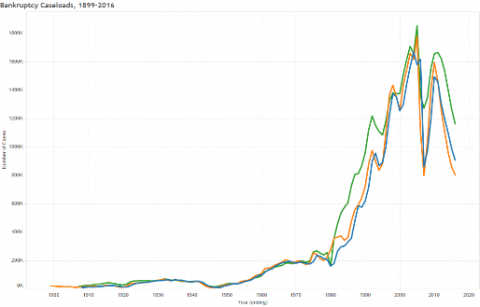Federal Bankruptcy Caseloads, 1899-2016
Article I, section 8 of the Constitution empowers Congress to pass “uniform Laws on the subject of Bankruptcies throughout the United States.” Congress enacted several short-lived legislative schemes to deal with bankruptcy during the nineteenth century before passing the Bankruptcy Act of 1898, which constituted the U.S. district courts as courts of bankruptcy and authorized referees to oversee bankruptcy cases.
In the decades following World War II, the number of new bankruptcy filings grew rapidly. In 1947, for instance, 13,262 new bankruptcies were filed with federal district courts. By 1967, that number had increased more than 15 times over to 208,329, a number far exceeding the total for all other civil matters before the district courts.
In response, Congress chartered a commission to revise the nation’s bankruptcy laws and deal with the increasing number of bankruptcy petitions. This commission ultimately recommended the creation of new bankruptcy courts to deal with the increasing workload. Congress passed the Bankruptcy Reform Act in 1978, creating courts with broad jurisdiction over a range of legal matters related to bankruptcy. Following a 1982 Supreme Court decision invalidating parts of this scheme, Congress revised the Act in 1984 to authorize district courts to assign bankruptcy matters to the bankruptcy courts operating as adjuncts to the district court and to give the courts of appeal the power to appoint bankruptcy judges.
The caseload data contained in the chart below, then, reflect the number of bankruptcy cases filed, pending, and terminated from 1899 to 2016 under different judicial structures. As the graph shows, although bankruptcy filings have decreased in recent years, such cases continue to outnumber all other federal judicial matters. You can use the controls to the right of the graph to zoom in on a particular period.

